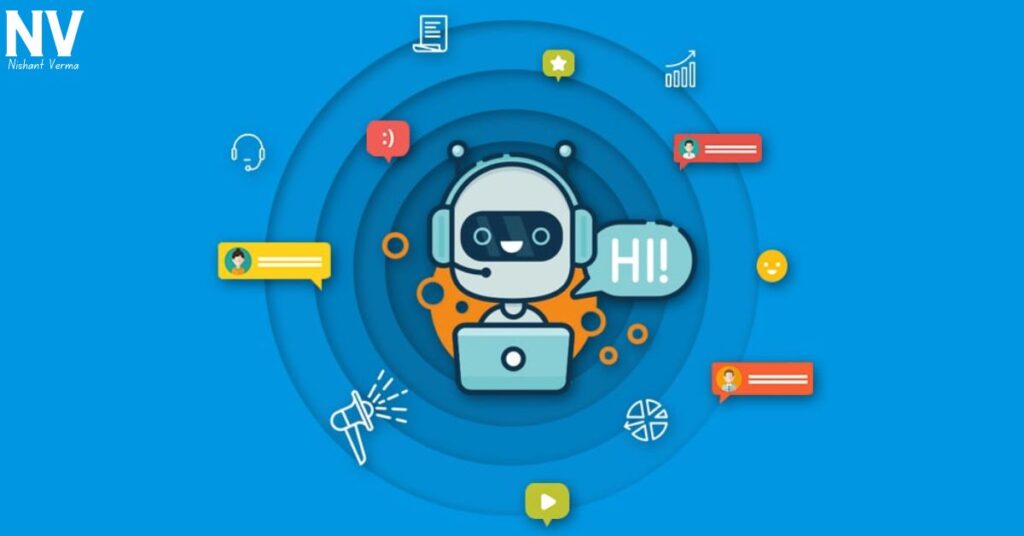In the ever-evolving landscape of business, the integration of chatbots has emerged as a game-changer in both sales and customer service. These digital assistants, powered by artificial intelligence, are transforming the way businesses interact with customers. This article explores the vast potential of chatbots in enhancing customer experiences, streamlining sales processes, and ultimately contributing to the success of businesses. Let’s delve into the Power of chatbots, demystify their workings, and understand how they can be harnessed effectively.

Chapter 1: Demystifying Power of chatbots
1.1 What are Chatbots?
Chatbots are like digital assistants that use artificial intelligence (AI) to engage in conversations with users. They can understand user queries and provide relevant information or assistance, making them invaluable tools for businesses.
1.2 How Do Chatbots Work?
These virtual assistants work by utilizing natural language processing (NLP) to comprehend user inputs and generate appropriate responses. They can be programmed with predefined rules or trained using machine learning algorithms to improve their understanding over time.
Chapter 2: The Role of Chatbots in Sales
2.1 Lead Generation
Chatbots engage website visitors, asking questions and collecting information to identify potential leads. This data can be used to route leads to the sales team or provide relevant resources based on user responses.
2.2 Product Recommendations
Understanding customer preferences, Power of chatbots can offer personalized product recommendations. This not only enhances the shopping experience but also increases the likelihood of successful sales.
2.3 Automated Sales Assistance
Chatbots handle routine sales inquiries, providing information about products, pricing, and promotions. This allows human sales agents to focus on more complex tasks and personalized interactions.
Chapter 3: The Impact of Chatbots on Customer Service
3.1 24/7 Availability
Unlike human agents with working hours, Power of chatbots are available 24/7. This ensures that customers can get assistance or information at any time, enhancing the overall customer service experience.
3.2 Instant Response
Chatbots provide customer queries, eliminating the need for customers to wait in long queues or endure extended Instant response times. This immediacy contributes to customer satisfaction.
3.3 Handling Routine Queries
Chatbots excel at handling routine and frequently asked questions. They provide quick and accurate responses, allowing human agents to focus on more complex issues that require a personal touch.
Chapter 4: Benefits of Utilizing Chatbots
4.1 Efficiency and Cost Savings
Power of chatbots automates repetitive tasks and inquiries, leading to increased efficiency and cost savings. Businesses can handle a larger volume of queries without proportionally increasing staffing levels.
4.2 Enhanced Customer Experience
The immediate responses and personalized interactions facilitated by chatbots contribute to an enhanced customer experience. Customers appreciate quick resolutions and personalized recommendations.
4.3 Data Collection and Analysis
Chatbots can collect valuable data on customer preferences, behaviors, and frequently asked questions. This data can be analyzed to make informed business decisions and improve overall operations.
4.4 Scalability
As the number of customer inquiries grows, chatbots can easily scale to handle the increased load. This scalability is particularly beneficial during peak periods or when launching marketing campaigns.
4.5 Consistency in Responses
Power of chatbots provides consistent responses to customer queries, ensuring that every customer receives the same level of information and service. This consistency builds trust and reliability.

Chapter 5: Implementing Chatbots in Your Business
5.1 Identify Use Cases
Determine specific use cases for chatbots in your business. Whether it’s handling customer inquiries, assisting in the sales process, or providing support, clearly define the roles your chatbots will play.
5.2 Choose the Right Platform
Select a platform for implementing your chatbots. This could be on your website, social media channels, or messaging apps. Consider where your target audience is most active.
5.3 Define Conversational Flows
Outline the conversational flows for your chatbots. Design predefined paths for common queries and integrate decision trees to handle various scenarios. Ensure that the language used is clear and customer-friendly.
5.4 Integrate with Existing Systems
Integrate your chatbots with existing systems and databases to access relevant information. This ensures that Power of chatbots can provide accurate and up-to-date information to users.
5.5 Train with Machine Learning
If possible, leverage machine learning to train your chatbots. This allows them to continuously improve their understanding of user queries and enhance their responses over time.
Chapter 6: Real-World Examples of Successful Chatbot Implementation
6.1 Domino’s Pizza
Domino’s utilizes a chatbot named Dom that allows customers to place orders through a conversational interface. Users can customize their pizzas, track deliveries, and get real-time updates, streamlining the ordering process.
6.2 Sephora
Sephora’s chatbot on the Kik messaging app offers beauty tips, product recommendations, and tutorials. Users can engage in a conversation to discover new products and receive personalized advice.
6.3 Bank of America
Bank of America chatbot, Erica, assists customers with various banking tasks. Erica can provide balance information, track spending patterns, and offer financial advice, making banking more accessible and convenient.

Chapter 7: Overcoming Challenges in Chatbot Implementation
7.1 Limited Understanding
Challenge: Power of chatbots may struggle to understand complex queries or nuances in language.
Solution: Implement regular updates and improvements to enhance the chatbot’s understanding. Use machine learning to allow the chatbot to learn from user interactions.
7.2 Lack of Personalization
Challenge: Chatbots may face challenges in providing highly personalized experiences.
Solution: Utilize data collected from user interactions to personalize responses. Implement algorithms that consider user history and preferences to enhance personalization.
7.3 Integration Issues
Challenge: Integrating chatbots with existing systems can be complex.
Solution: Work closely with IT teams and utilize platforms that offer seamless integration. Ensure that the Power of chatbots can access relevant data for accurate responses.
Chapter 8: Tips for Successful Targeted Marketing through Customer Segmentation
8.1 Craft Tailored Messages
Use the insights from customer segmentation to create messages that resonate with each segment. Speak directly to their needs, preferences, and pain points.
8.2 Choose the Right Channels
Understand where your target segments spend their time and allocate your marketing resources accordingly. Whether it’s social media, email, or other channels, be present where your customers are.
8.3 Dynamic Personalization
Embrace dynamic personalization on your website and in marketing communications. Display content, product recommendations, and offers that align with the specific characteristics of each segment.
8.4 Iterate Based on Feedback
Actively seek feedback from your customers. Understand how they respond to your segmented marketing efforts and be willing to adjust your approach based on their input.
8.5 Monitor and Analyze
Continuously monitor the performance of your marketing campaigns for each segment. Use analytics tools to assess engagement, conversion rates, and other relevant metrics to refine your strategy.
Chapter 9: Conclusion
In conclusion, Power of chatbots have emerged as indispensable tools in the realms of sales and customer service, reshaping the way businesses interact with their audiences. The integration of chatbots brings efficiency, personalization, and scalability to customer interactions, fostering enhanced experiences and driving successful sales outcomes. Real-world examples demonstrate the diverse applications of chatbots, from streamlining pizza orders to providing personalized beauty advice.
However, the journey of implementing chatbots is not without challenges. Addressing issues like limited understanding and lack of personalization requires ongoing improvements and a commitment to leveraging machine learning capabilities. Overcoming integration challenges demands collaboration with IT teams and strategic platform choices.
As businesses embrace the potential of Power of chatbots , the key lies in strategic implementation and continuous refinement. By identifying specific use cases, choosing the right platform, defining conversational flows, and integrating with existing systems, businesses can unlock the full potential of chatbots in their operations.
The real-world success stories of Domino’s Pizza, Sephora, and Bank of America underscore the transformative impact of chatbots across diverse industries. From revolutionizing the ordering process to providing personalized financial advice, chatbots are proving to be versatile and powerful assets for businesses.
In the face of challenges, businesses must stay agile, iterate based on feedback, and consistently monitor and analyze the performance of their chatbot implementations. By doing so, they can navigate the complexities of integrating this technology seamlessly into their operations, ensuring long-term success.
As we look to the future, the Power of chatbots is set to expand further. Advancements in machine learning and natural language processing will likely enhance their capabilities, enabling even more sophisticated interactions. Businesses that adapt and harness the potential of chatbots are well-positioned to lead in an era where customer engagement and satisfaction are paramount. In this dynamic landscape, chatbots are not just tools; they are strategic assets that empower businesses to thrive in the digital age.




